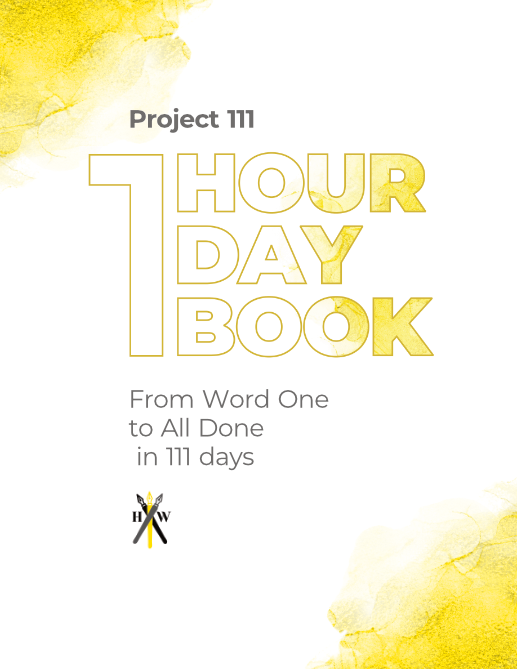Stepping into the realm of World-Building in Science Fiction and Fantasy, we’re diving deep to uncover how legendary worlds are crafted. This guide lays out the essentials, from drawing inspiration from giants like Tolkien and Lucas, to mastering the balance between detail and narrative flow. You’ll get a solid grasp on creating believable rules for magic or technology, designing rich cultures that feel real, and ensuring your sci-fi world holds up scientifically.
We’re not just talking theory here; you’ll see practical examples of successful universes that have captivated audiences worldwide. Additionally, we’ve curated a selection of materials to ignite your imaginative fire even more. Diving into the creation of extraterrestrial societies or mapping out the intricate governance of arid worlds, this article offers both implements and wisdom for each phase of your adventure.
Table of Contents:
- Foundations of World-Building in Science Fiction and Fantasy
- The Five Categories of Worlds to Build Within
- Creating Rules and Systems in Your World
- Culture and Society in Imaginary Worlds
- Balancing Detail with Narrative Flow
- Set Some Parameters for Your Sci-Fi or Fantasy World
- Categorize Your Sci-Fi Novel
- The Art of Mastering Science in Your World
- FAQs in Relation to World-Building in Science Fiction and Fantasy
- Conclusion
Foundations of World-Building in Science Fiction and Fantasy
Imagine stepping into a world where the impossible becomes possible. At the core of sci-fi and fantasy lies a unique allure, ensnaring generations with tales where the fantastical transforms into reality. However, crafting these realms requires more than just unleashing your creativity; it demands thorough preparation and insight.
Drawing Inspiration from Renowned Creators
The legends of world-building, like J.R.R. Tolkien’s Middle Earth in Lord of the Rings, J.K. Rowling’s wizarding world in Harry Potter, or George Lucas’ galaxy far, far away in Star Wars, all started with an idea grounded by inspiration drawn from various sources. By weaving together strands from the tapestry of reality, history, and their inventive minds, these visionaries established new standards for creating worlds as vivid and real to us as the one we live in.
Tolkien’s linguistic expertise gave depth to Middle Earth through its languages; Rowling mixed mythological creatures with her imaginative magic system; while Lucas combined futuristic technology with age-old themes of heroism and conflict. Drawing inspiration allows you to create alternate realities or speculative futures that resonate deeply with human experience because they mirror aspects of daily life or historical events we recognize.
The Five Categories of Worlds to Build Within
In constructing your universe, consider diving into one (or more) among five main categories: Real World Past vs Fantasy being one pivotal dichotomy alongside others like Alternate Reality vs Speculative Future. Whether you’re grounding your story on historical accuracy or sailing off purely on imagination’s tides determines how relatable yet novel your setting feels—offering either a reflective mirror or an escape hatch from reality.

Our 84-page book planner and 111 day writing course.
The Five Categories of Worlds to Build Within
Building worlds in science fiction and fantasy isn’t just about throwing a bunch of aliens into a space bar or deciding whether your elves live in forests or cities made of clouds. Crafting universes in sci-fi and fantasy demands a delicate balance, weaving together the threads of historical reality with the fabric of unfettered creativity.
Real World Past vs. Fantasy
Imagine taking a stroll through history but with a twist—where dragons dictate the outcomes of wars, or steam-powered technology reigns supreme. This blend allows authors to draw inspiration from historical events while injecting their narratives with fantastical elements that feel as tangible as our daily life.
But let’s not forget the other side of the coin: realms born purely from imagination. Think Harry Potter series’ magical corridors echoing with spells or Star Wars’ desert planets buzzing with alien races. These settings may borrow aspects from real-life cultures and technologies but are spun into something entirely new under their creators’ careful hands.
Navigating the fine line between the familiar and the fantastical is key to immersing audiences in a universe where they can wander through untold futures yet remain anchored in what feels undeniably human.
To craft these alternate realities, it helps to categorize your work within one (or more) of five main categories including Real World Past and Fantasy alongside Alternate Reality, Speculative Future, among others. Lord of the Rings’ Middle Earth being a prime example created by J.R.R Tolkien; while George Lucas gave us an entire galaxy far far away in Star Wars. Navigating through each genre, you unearth both hurdles and boundless opportunities for innovation—from constructing intricate governmental systems on a frost-covered celestial body to delving into societal norms during temporal anomalies.
World-building in sci-fi and fantasy goes beyond aliens or elves; it’s a mix of real history and pure imagination. From dragons altering wars to new galaxies, blending the familiar with the fantastic makes your world believable. Dive into categories like Real World Past and Fantasy for endless creativity.
Creating Rules and Systems in Your World
Imagine you’re crafting a world where magic is as common as Wi-Fi. But here’s the kicker: without consistent rules and systems, your magic might just fizzle out like a bad internet connection. This guideline holds true not only for iconic realms like Hogwarts or Middle Earth but also for any fantastical or futuristic universe you conjure in your mind.
Diving into hard science fiction? Its lifeblood is the meticulous attention to scientific detail. Think of how The Matrix blends mind-bending concepts with real-world logic. Soft science fiction, on the other hand, plays more loosely with the facts to focus on societal consequences—picture the cultural critiques in “Star Trek”. In weaving the fabric of their worlds, creators must erect robust structures for their tech and leadership mechanisms, ensuring they avoid tumbling into realms where things happen without rhyme or reason.
Magic technology governance needs its own set of laws too—not those enforced by wizards in blue hats but principles that govern how powers are acquired, used, and limited within your story’s universe. Whether it’s an ancient spellbook or advanced alien tech shaping your characters’ fate, keeping these elements grounded ensures readers can suspend disbelief without feeling lost at sea.
Navigating the fine line between liberty and restriction actually fuels imagination, instead of suppressing it. In setting limits, you’re essentially spotlighting the myriad of amazing occurrences that can unfold within those confines, inspiring both author and audience to delve into each crevice of potential in your imagined world.
Culture and Society in Imaginary Worlds
This isn’t just about slapping some fancy names on a map or deciding whether your elves wear boots or sandals. This involves weaving cultures into your narrative, infusing every page with a sense of authenticity that makes the realms of fantasy or sci-fi truly alive.
When J.R.R. Tolkien crafted Middle Earth, he didn’t just create a backdrop for epic quests; he designed languages, religions, and cultural norms that made it feel real. Just like Tolkien brought Middle Earth to life with its own languages and traditions, George Lucas’s Star Wars saga explores not only the thrill of space battles but also the intricate political systems and daily challenges faced by beings from lush forest worlds to arid deserts.
Drawing Inspiration from Renowned Creators
To build worlds with depth akin to those in Harry Potter or The Handmaid’s Tale requires more than just imagination; it demands observation. Drawing inspiration from history can give you ideas on how societies function under different conditions—whether it’s an ice planet struggling over natural resources or an alternative version of our world with made-up technology possibilities.
But remember: while borrowing elements from real-life historical events can add authenticity to your creation, blending them with original fantasy elements creates something uniquely yours. Imagine if, within extraterrestrial species, we reimagined gender roles to unveil relationships and power structures that defy what we assume to be true based on human experiences—a bold stride past the conventional narratives dominating contemporary storytelling.
In essence: developing cultures societies daily lives involves weaving together broad strokes of creativity with fine threads of detail drawn from both reality and imagination—to make readers not only understand but want to inhabit your world.
Balancing Detail with Narrative Flow
World-building is like seasoning a dish. Too little, and it’s bland; too much, and you’re overwhelmed. In spinning tales of new worlds or magical realms, the art is in weaving complex elements with character growth to keep the story moving smoothly.
Achieving this equilibrium keeps the audience captivated, preventing them from drowning in a sea of convoluted details. Imagine trying to navigate through Star Wars’ galaxy without understanding the force or the political structures at play—it wouldn’t feel real.
Drawing Inspiration from Renowned Creators
The masters of world-building—J.R.R. Tolkien with Middle Earth, J.K Rowling’s parallel world of witches and wizards, George Lucas’ creation of an entire galaxy for Star Wars—knew something vital about storytelling: Crafting realms like Middle Earth, a magical society of witches and wizards, or an expansive galaxy for Star Wars isn’t just about grandeur; it’s deeply entwined with forging connections that make us root for the souls navigating these vast universes.
These visionaries taught us that each element they weave into their narrative should either propel the story forward or enrich our bond with its inhabitants. From Harry Potter series’ Hogwarts School to Star Trek’s starships exploring new civilizations—they let their environments shape their stories’ souls.
Culture and Society in Imaginary Worlds
Weaving in elements such as the dynamics of gender, the interplay between extraterrestrial species, and communal exchanges not only enriches your made-up realm but also ensures a fluid storytelling experience by anchoring extraordinary aspects within experiences that resonate on a human level.
Focusing on how daily life unfolds in these settings not only makes them more believable but allows for richer character development as they navigate through challenges shaped by their cultural surroundings—a tactic employed effectively across genres from Handmaid’s Tale’s dystopian society to high castle-like realms found in fantasy novels.
Set Some Parameters for Your Sci-Fi or Fantasy World
Every great sci-fi or fantasy world has its rules. Without them, stories might just fall into chaos. Think about it: even in a universe where dragons hoard gold and spaceships travel faster than light, some things have to be off-limits. Why? Because setting parameters makes your world believable.
Why Researching Real-World Science Matters
Exploring the realms of actual science offers more than just credibility to those obsessed with hard sci-fi; it presents a gold mine for authors aiming to distinguish their narrative in a sea of stories. Exploring the depths of actual science not only lends genuine depth to your narrative but also ignites a firestorm of imaginative possibilities. Imagine figuring out how people on an ice planet stay warm and you stumble upon the concept of thermal energy harvested from local fauna. Out of nowhere, you’re armed with a slick method for enduring the cold and possibly even rich traditions and disputes over this newfound bounty.
Anchoring the whimsical in scientific truths allows your creativity to soar within bounds that resonate with our grasp of cosmic mechanics, making everything feel genuinely plausible.
Crafting Believable Limitations
A key step in making sure your fictional universe doesn’t collapse under its own complexity is establishing what’s possible—and what’s not—right from the get-go. Whether it’s magic governed by ancient laws or technology so advanced it seems magical, knowing these boundaries gives characters challenges to overcome and goals to strive toward.
Sure, exploring technology possibilities like time travel or made-up tech sounds fun (and it is.), but defining their limits early on helps avoid plot holes later down the line. Plus, when readers understand these parameters they’re more likely to stay engaged as they see characters navigate through your carefully constructed world without breaking its internal logic.
Setting rules in your sci-fi or fantasy world keeps stories from chaos, making them believable. Digging into real-world science not only adds authenticity but also fuels creativity, helping you craft a universe where imagination thrives within realistic bounds.
Categorize Your Sci-Fi Novel
Have you ever pondered whether your science fiction manuscript delves deep into the intricacies of quantum mechanics or embarks on an exhilarating journey across extraterrestrial cultures? Determining the essence of your sci-fi creation hinges on discerning if it delves into the rigors of scientific accuracy, flirts with speculative science, or embarks on an interstellar odyssey blending myth and technology. Let’s break it down without getting lost in space.
Hard vs. Soft Science Fiction: A Cosmic Divide
The cosmos of sci-fi writing splits into two main galaxies: hard and soft science fiction. Hard science fiction sticks close to scientific accuracy and logic—think “The Martian” where survival hinges on real-world physics and botany. On the other hand, soft science fiction zooms in on societal impact and human experience within speculative settings; classics like “Brave New World” serve as prime examples.
Choosing between these approaches will majorly shape how you craft your universe. For instance, when creating a universe governed by made-up technology in hard sci-fi, meticulous research into current scientific principles ensures that even your wildest inventions have roots in reality. On the flip side, immersing yourself in soft sci-fi’s alternative societal landscapes opens up a playground for pondering ‘what-ifs’ related to culture, politics, and the essence of humanity, all without requiring an intricate understanding of astrophysical concepts.
Navigating Through Science Fantasy
If neither hardcore particles nor societal speculation quite fit the bill for your epic saga maybe you’re charting a course through the nebulous realm of science fantasy—a blend where magic meets molecule but doesn’t need to explain its workings at every turn (looking at you “Star Wars”). Here rules are more flexible; what matters most is internal consistency so that readers can suspend disbelief long enough to join forces with your characters against whatever galactic empire needs overthrowing this time around.
The Art of Mastering Science in Your World
Creating a sci-fi world that feels real yet brimming with imagination requires more than just dreaming up new galaxies. Delving into the intricacies of science lends your stories a blend of credibility and richness, akin to crafting an intricate tapestry. Think of it as cooking; you need the right balance of ingredients to make a dish unforgettable.
Let’s talk hard facts first. Incorporating well-researched scientific concepts doesn’t just add layers to your story; it anchors your floating cities and warp drives in something tangible. By weaving together meticulous science and deep narratives about humanity, authors like Octavia Butler craft tales that not only captivate but also demonstrate the significance of comprehending the scientific underpinnings essential for creating universes that touch our souls.
To start, let’s break down what we mean by “mastering science.” On one end, there’s hard science fiction—think Andy Weir’s “The Martian”—which thrives on technical accuracy and plausible technological advancements. Soft science fiction, on the flip side, immerses us in explorations of societal changes and dabbles with ‘what if’ situations, steering clear from the intricacies of each technological element. Where does your story fit? Deciding this early can guide how much research you dive into.
Finding inspiration can be as easy as flipping through an article or diving deep into physics textbooks—whatever gets those creative gears turning. Remember: even though we’re dealing with fictional universes, grounding them in reality makes the journey all the more immersive for readers. To seamlessly blend the fantastical with the tangible, here’s a handful of strategies aimed at weaving your story’s fabric without snagging on those complex nuances.
FAQs in Relation to World-Building in Science Fiction and Fantasy
What world did science fiction and fantasy explore?
Sci-fi ventures into future tech, space, and time. Fantasy dives into magic realms and mythical creatures.
How do you build a world for a science fiction novel?
Start with scientific truths then twist them. Imagine advanced tech, alien societies, or dystopian futures.
How do you build a world for a fantasy novel?
Create rules for your magic. Sketch out maps of lands filled with fantastical beasts and ancient lore.
How science fiction and fantasy can help us make sense of the world?
They mirror real issues in otherworldly settings, letting us confront fears and hopes more openly.
Conclusion
Diving into World-Building in Science Fiction and Fantasy, you’ve journeyed through crafting worlds that captivate. From Tolkien’s Middle-earth to Lucas’ galaxy far, far away, the art of creation has no bounds.
Remember: Consistency is key. Whether it’s magic or technology, make sure your world operates on solid rules.
Remember: Culture shapes society. Design societies with depth that readers can believe in.
Remember: Balance detail with story flow. Too much information overwhelms; just enough enchants.
In this realm of imagination meeting structure, you’re now equipped to forge unforgettable realms. Start small, think big and let creativity lead the way towards building your own universe within science fiction and fantasy storytelling.
Reed Smith
Reed is the founder and builder of Habit Writing and enjoys all things writing. He loves learning about the craft of storytelling, writing messy drafts, and playing board games with his wife, friends, and family.
Our 84-page book planner and 111 day writing course.



